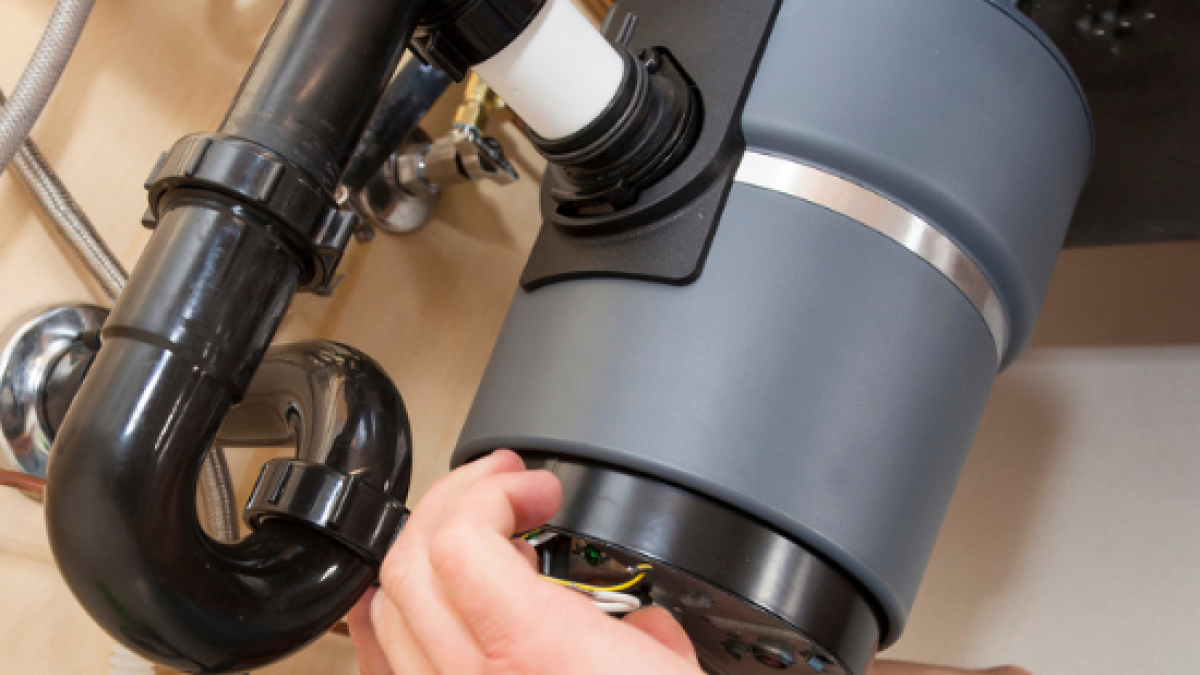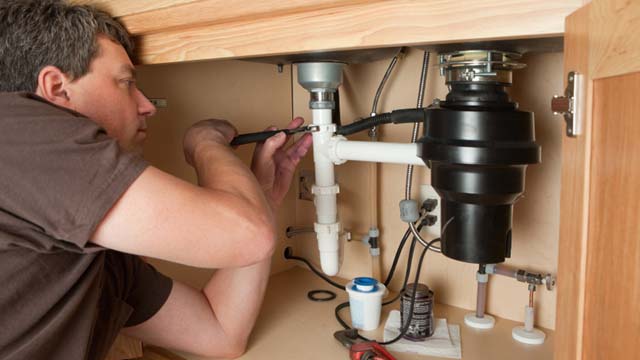Tested Ways to Fix a Leaking Waste Disposal Unit
Tested Ways to Fix a Leaking Waste Disposal Unit
Blog Article
Everybody maintains their own individual idea involving Tips on Fixing a Leaking Garbage Disposal.

Garbage disposals are vital kitchen area home appliances that assist in throwing away food waste effectively. Nevertheless, a dripping waste disposal unit can be a discouraging and untidy problem to deal with. Fortunately, many leakages can be taken care of easily with a few basic steps. In this short article, we will certainly discuss exactly how to fix a leaking waste disposal unit efficiently.
Intro
Waste disposal unit are installed under kitchen sinks and are created to shred food waste right into smaller sized items, permitting it to travel through the pipes system easily. While these devices are normally trusted, leakages can take place with time as a result of damage, loosened connections, or damage to the unit.
Step-by-Step Overview to Dealing With a Leaking Garbage Disposal
Switch off the Power
Prior to attempting any repairs, make certain that the power to the waste disposal unit system is turned off to prevent the risk of electrical shock.
Locate the Leakage
Determine the exact area of the leak and determine the reason
Tighten Links
Make use of a wrench to tighten any kind of loose links in between the disposal device and the pipes system.
Change Seals or Gaskets
If the leak is due to used seals or gaskets, eliminate the old elements and change them with new ones.
Patching Cracks or Openings
For cracks or openings in the disposal device, usage epoxy or a suitable patching product to secure the broken area.
Determining the Resource of the Leakage
Prior to attempting to deal with a dripping waste disposal unit, it is vital to identify the source of the leakage. This can typically be done through visual evaluation or by carrying out straightforward tests.
Visual Assessment
Inspect the waste disposal unit device carefully for any signs of water leakage. Pay close attention to areas around seals, gaskets, and link points.
Checking for Leaks
One method to evaluate for leaks is by running water through the disposal device and checking for any noticeable signs of leakage.
Usual Causes of Leakages in Rubbish Disposals
Worn Seals and Gaskets
Seals and gaskets play a vital function in protecting against water from dripping out of the garbage disposal. With time, these elements can weaken, bring about leakages around the disposal system.
Loose Connections
The links between the garbage disposal and the plumbing system can come to be loose with time, causing water to leakage out during operation.
Cracks or Holes in the Disposal Device
Physical damages to the garbage disposal, such as cracks or holes in the real estate, can additionally result in leaks.
Devices and Products Needed for Dealing With a Leaking Waste Disposal Unit
Before beginning the repair process, collect the necessary tools and materials, consisting of a screwdriver, adjustable wrench, plumber's putty, substitute seals or gaskets, and epoxy or patching product for repairing cracks or openings.
Examining the Garbage Disposal After Repair
As soon as the repair service is full, test the waste disposal unit by running water via it to make certain that the leak has been fixed.
Preventive Maintenance Tips to Prevent Future Leakages
To stop future leaks, it is vital to perform regular maintenance on your garbage disposal. This consists of maintaining it tidy, avoiding putting non-food products or tough objects down the disposal, and periodically checking for leaks or various other problems.
Conclusion
Finally, repairing a dripping garbage disposal is a reasonably straightforward process that can be finished with standard tools and materials. By following the actions described in this short article and practicing preventive maintenance, you can maintain your waste disposal unit in good working problem and avoid expensive repair work in the future.
What to Do About a Leaking Garbage Disposal
A leaking garbage disposal often goes unnoticed until you confront a sopping cabinet, a foul-smelling puddle, or an audible drip-drip-drip from the unit. The fix can be frustrating, too, because the leak can stem from a number of components in the system. Fortunately, with a little sleuthing, you can zero in on the leak and—depending on the exact location—stop the icky oozing and repair the component that caused it. Worst case scenario, if it turns out that the garbage disposal must be replaced, installing a new one is a reasonable do-it-yourself task for those with basic plumbing skills. Read on to keep the cash you’d otherwise hand over to a pro.
Prepare to find the leak
Prior to testing the garbage disposal for leaks, unplug it at the wall outlet and turn off the power from the breaker box to prevent electrical shock. Then insert a watertight sink stopper into your sink drain and wipe the unit dry with a clean cloth. In any handy container, mix a few drops of food coloring into a few cups of water, and pour the dyed water onto the sink stopper to help you locate the leak.
Investigate the source
the top, where the disposal meets the sink drain the side, where the dishwasher hose or main drain pipe connects to the disposal or the bottom of the unit Inspect each of these locations while gliding a light-colored rag over the unit; the dyed water will readily show on the rag and reveal the location of the leak. If a leak isn’t immediately apparent, remove the sink stopper and pour a few more cups of dyed water down the sink drain, then check for leaks again. Leaks near the top of the unit are more likely to show themselves while the sink is plugged, while side and bottom leaks are more noticeable while the sink is unplugged.
The metal sink flange that sits directly inside the sink drain is typically sealed around the top with plumber’s putty (a clay-like sealant) and then secured from under the sink with bolts. If the plumber’s putty deteriorates, or the bolts loosen, the flange can no longer form a watertight seal between the sink drain and the disposal—which could cause a leak at the top of the unit.
To reseal the leaky flange, you must first detach the garbage disposal. Start by loosening the screws securing the main drain pipe to the disposal, then loosen the screws in the metal clamp securing the dishwasher hose to the disposal and detach the drain pipe and dishwasher hose from the disposal. Loosen the screws in the mounting ring that connects the disposal to the metal mounting assembly beneath the sink, then pull down the disposal and carefully set it on a clean, dry surface. Loosen the bolts in the mounting assembly with a wrench, then pull down the mounting assembly and set it near the disposal.

As a passionate reader about The Handy Guide To Fixing Your Garbage Disposal Leaking, I figured sharing that article was really useful. Sharing is good. You just don't know, you may be doing someone a favor. Thanks a lot for taking the time to read it.
This Website Report this page